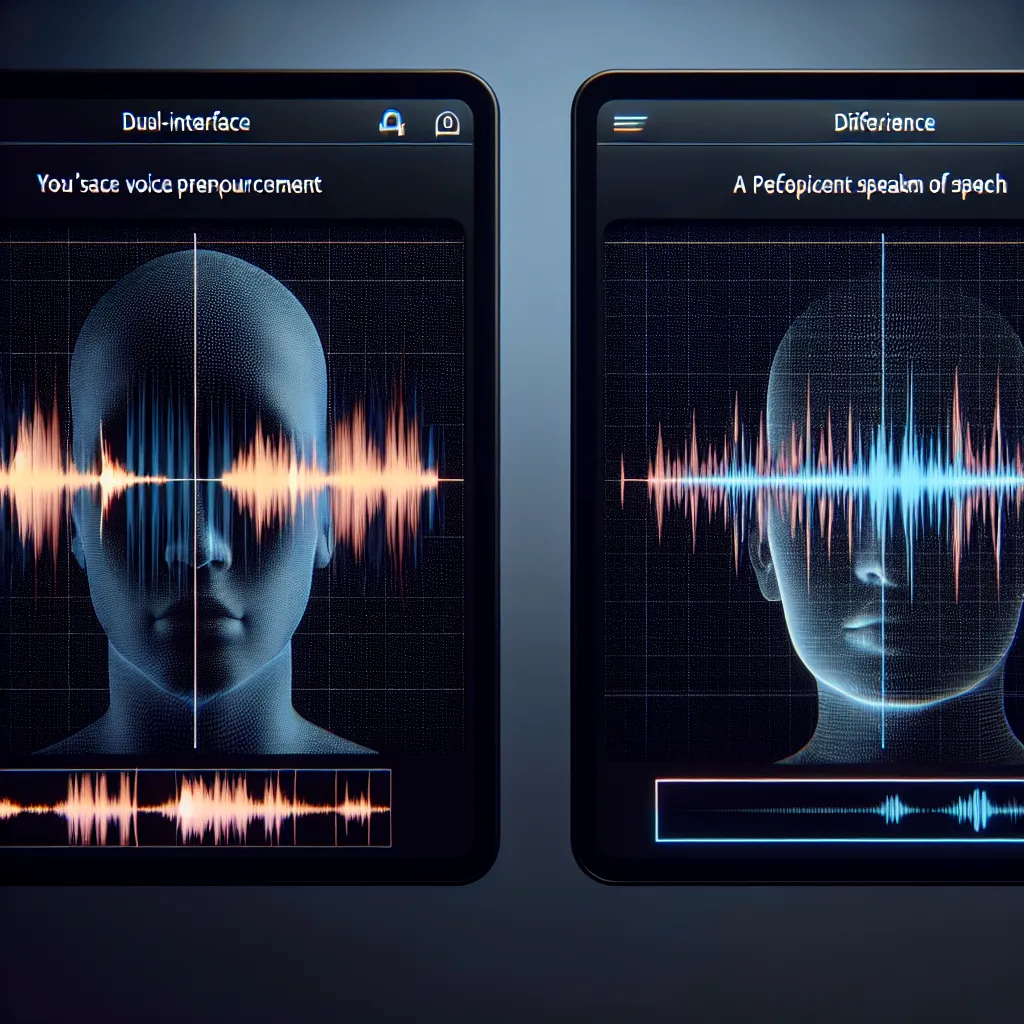In the digital age, mastering English pronunciation has become more accessible than ever, thanks to interactive software. These innovative tools offer learners a dynamic and engaging way to refine their accent and speak with confidence. This article explores the most effective strategies for improving your pronunciation using interactive software, providing valuable insights for language learners at all levels.
Understanding Interactive Pronunciation Software
Interactive pronunciation software refers to digital applications and platforms designed to help users improve their spoken English. These tools utilize advanced speech recognition technology, providing real-time feedback and personalized exercises tailored to the user’s needs.
Key Features of Interactive Pronunciation Software
- Speech Recognition: Analyzes your pronunciation and compares it to native speakers.
- Visual Feedback: Offers graphical representations of sound waves or mouth movements.
- Personalized Lessons: Adapts to your specific pronunciation challenges.
- Gamification: Incorporates game-like elements to make learning engaging and fun.
 Interactive Pronunciation Software Features
Interactive Pronunciation Software Features
Benefits of Using Interactive Software for Pronunciation
1. Immediate Feedback
One of the most significant advantages of interactive software is the instant feedback it provides. Unlike traditional methods, where you might have to wait for a teacher’s correction, these tools give you immediate insights into your pronunciation errors.
2. Flexibility and Convenience
Interactive software allows you to practice anytime, anywhere. This flexibility is particularly beneficial for busy professionals or students who may not have the time for regular language classes.
3. Personalized Learning Experience
Many interactive pronunciation tools use artificial intelligence to create a tailored learning path. They identify your specific pronunciation challenges and focus on areas that need the most improvement.
4. Engagement Through Gamification
By incorporating game-like elements, interactive software makes the learning process more enjoyable. This increased engagement often leads to better retention and faster improvement.
How to Effectively Use Interactive Software for Pronunciation Improvement
1. Choose the Right Software
Select a program that aligns with your learning style and goals. Some popular options include:
- Rosetta Stone
- Duolingo
- FluentU
- ELSA Speak
Consider factors such as user interface, features, and compatibility with your devices.
2. Set Clear Goals
Define specific pronunciation goals. For example:
- Mastering the ‘th’ sound
- Improving intonation in questions
- Perfecting vowel sounds
Having clear objectives will help you focus your practice and measure progress.
3. Practice Regularly
Consistency is key in pronunciation improvement. Aim for daily practice sessions, even if they’re short. Just 15-20 minutes a day can lead to significant improvements over time.
4. Use Visual Aids
Many interactive tools offer visual representations of sound waves or mouth movements. Pay close attention to these visual aids to understand the physical aspects of pronunciation.
5. Record and Compare
Take advantage of recording features to compare your pronunciation with native speakers. This self-assessment can be incredibly insightful and motivating.
 Pronunciation Comparison Tool
Pronunciation Comparison Tool
6. Focus on Problematic Sounds
Use the software to identify your specific pronunciation challenges. Most interactive tools will highlight areas where you need improvement, allowing you to focus your efforts efficiently.
7. Utilize Slow-Motion Playback
Many interactive programs offer slow-motion playback of native pronunciations. This feature can be especially helpful for complex sounds or rapid speech patterns.
Common Mistakes to Avoid
-
Overreliance on Software: While interactive tools are valuable, they shouldn’t replace human interaction entirely. Practice with native speakers when possible.
-
Ignoring Context: Focus not just on individual sounds, but also on how words fit into sentences and conversations.
-
Neglecting Prosody: Pay attention to stress, rhythm, and intonation, not just individual phonemes.
-
Rushing Progress: Pronunciation improvement takes time. Be patient and persistent in your practice.
-
Failing to Apply Learning: Use the skills you’ve developed with the software in real-world conversations.
Phonemic Chart and Commonly Mispronounced Words
Understanding the International Phonetic Alphabet (IPA) can greatly enhance your use of interactive pronunciation software. Here’s a simplified phonemic chart for English:
- Vowels: /i:/, /ɪ/, /e/, /æ/, /ə/, /ɜ:/, /ʌ/, /ɑ:/, /ɒ/, /ɔ:/, /ʊ/, /u:/
- Consonants: /p/, /b/, /t/, /d/, /k/, /g/, /f/, /v/, /θ/, /ð/, /s/, /z/, /ʃ/, /ʒ/, /h/, /tʃ/, /dʒ/, /m/, /n/, /ŋ/, /l/, /r/, /w/, /j/
Here are 10 commonly mispronounced words related to interactive learning, along with their correct pronunciations:
- Interactive – /ˌɪntərˈæktɪv/
- Software – /ˈsɔːftweər/
- Pronunciation – /prəˌnʌnsiˈeɪʃən/
- Algorithm – /ˈælɡərɪðəm/
- Interface – /ˈɪntərfeɪs/
- Tutorial – /tuːˈtɔːriəl/
- Feedback – /ˈfiːdbæk/
- Gamification – /ˌɡeɪmɪfɪˈkeɪʃən/
- Virtual – /ˈvɜːrtʃuəl/
- Phoneme – /ˈfoʊniːm/
Conclusion
Interactive software has revolutionized the way we approach pronunciation improvement in English. By leveraging these tools effectively, learners can make significant strides in their pronunciation skills. Remember to practice regularly, focus on your specific challenges, and combine software usage with real-world speaking opportunities for the best results.
For more insights on improving your English pronunciation, check out our articles on how to improve pronunciation with immersive experiences and how to practice pronunciation using interactive lessons.
We’d love to hear about your experiences with interactive pronunciation software. Share your favorite tools and tips in the comments below!




